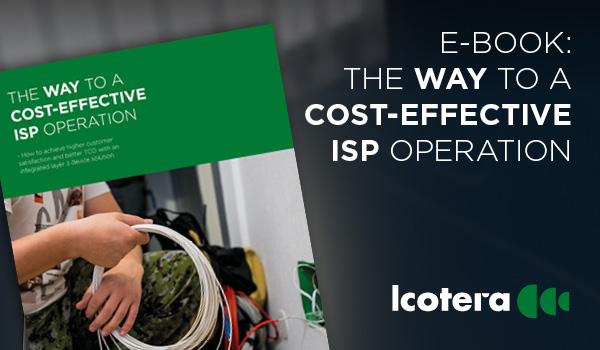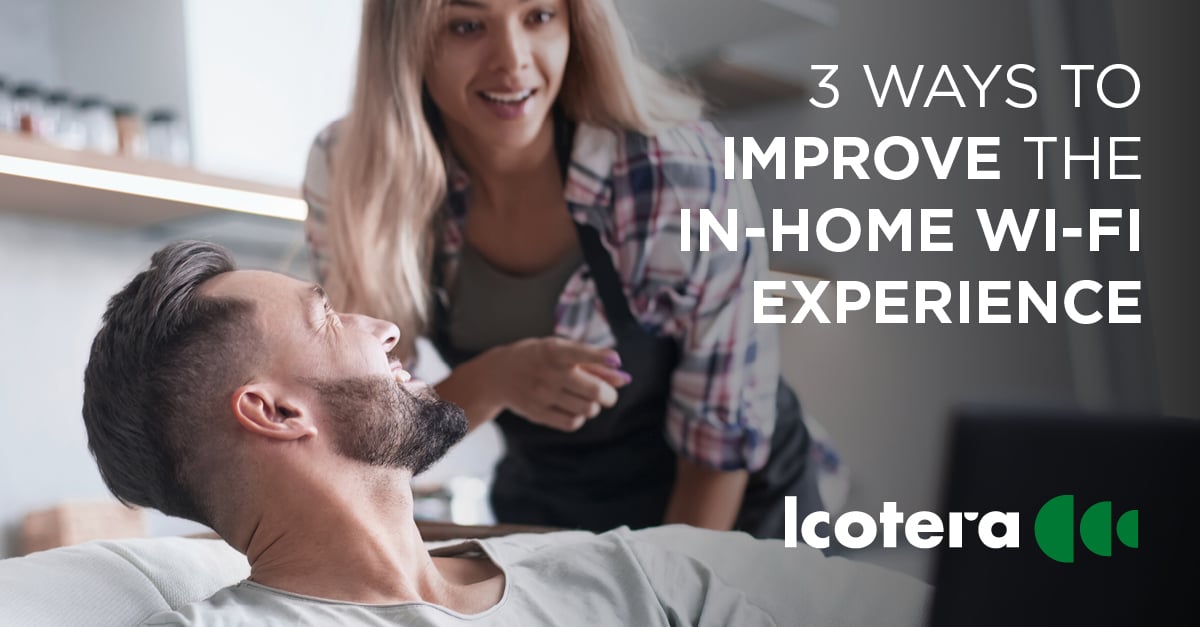The in-home Wi-Fi experience should ideally be straightforward and hassle-free. Unfortunately, many end-users struggle with complicated onboarding processes, poor coverage, and inadequate support. Here, we share three key ways to improve the in-home Wi-Fi experience.
In today’s hyperconnected world, customers demand a Wi-Fi connection that offers high quality and increased reliability.
Unfortunately, poor coverage, dead spots, and slow speeds are some of the most well-known problems. Still, too many ISPs are having trouble finding the magic combination of keeping a low total cost of ownership (TCO) while increasing customer loyalty.
But actually, it is not that complicated. It all comes down to quality.
Here are three ways to improve the in-home Wi-Fi experience, increasing customer satisfaction and enabling customer loyalty – all while running a profitable business
1: Successful customer journey
The customer journey in the FTTH industry consists of several steps. To improve your customer experience, you need to be present and provide a satisfying service in these four crucial touchpoints of the customer journey:
- The unboxing experience: This is the first physical interaction with the device. Therefore, the unboxing must be a pleasant experience, and often a premium glossy sleeve is chosen to make a good first impression. The box can also include a quick start guide and other valuable content.
- The onboarding experience: How do you get your customer connected and started as quickly and hassle-free as possible? It should be crystal clear what you want your customer to do, in which order, and each step's purpose. This part of the journey can be eased by including quick guides, intuitive color-coding on cables and plugs, and login credentials for the customer portal. This can be supported by a downloadable app, guiding the customer through the complete onboarding process.
- The Wi-Fi experience in daily use: This step is all about delivering your customer what they have been promised. With a well-positioned and powerful router based on the latest Wi-Fi technology, you will secure performance and coverage for the entire household with one single unit. This will be further elaborated on below.
- The support and self-service experience: When the customer receives quick and efficient support, self-service advisories, or automated optimizations, the customer will experience a professional ISP that has thought of every step.
2. Powerful technology
The unboxing and onboarding experience is important to enhance the customer experience, but all your efforts and hard work will be wasted if the customer premise equipment (CPE) does not provide the promised throughput and performance.
When your customer buys a 1G connection, they naturally expect to get the best out of it. The most important technology to secure the best Wi-Fi performance is “beamforming”: When the user is in the periphery of the router coverage, the router starts using multiple antennas to transmit the Wi-Fi signal. The increased Wi-Fi signal gives better quality and performance, leading to higher throughput and less latency - even on very long distances.
Another important technology for high throughput is “MU-MIMO” (Multi-User MIMO), where multiple antennas are used for transmitting and receiving to provide your customer with the promised throughput.
With Icotera’s Wi-Fi 6 router, you can take your in-home performance to the next level with a premium configuration of 8x8 + 4x4 (8Tx + 8Rx on 5GHz and 4 Tx + 4 RX on 2,4GHz) – including beamforming and MU-MIMO. Special attention has been put into creating a beautiful, minimalistic, yet fully flexible design, which matches the modern home. Full backward compatibility for both WAN/LAN, VoIP, and Wi-Fi makes the i4880 router the obvious choice for a high-end residential router for the serious service provider.
3. Efficient customer support
When your customers experience a lagging Wi-Fi-connection, they will most likely reach out to your customer support. However, customer support has two major challenges: Opening hours and waiting time.
If the problem occurs outside of opening hours, the end-user is left with no choice but to wait. The next day, when the customer makes the call, he often has to wait for the next free support agent, and he then has to describe the issue that occurred yesterday or earlier for the supporter to fix the problem over the phone. This quickly becomes a frustrating situation for both parties, and what is worse, it often does not solve the actual issue.
But it does not have to be that way.
With an intelligent network monitoring system, you can take the help desk function to the next level. As a service provider, the system will provide the support agent with on-the-spot access to essential customer-specific information, including details that enable him to identify the problem remotely. With ICONS 2.0, each wireless device's performance and connection can be observed in real time or historically to help identify the issues and do root-cause analysis.
Other features include widget-based design, tailored to different support levels, and AAAS for Authentication, Authorization, Accounting and Secure transport, including single sign-on for different users. All together, these three ways help you reduce complexity, increase transparency, speed up troubleshooting, and most importantly: Ensure happy customers.
---------------------------------------------------------------------
![]()
Want to know more about out how to improve the customer experience while keeping your TCO at a minimum?
Please reach out to Technical Program Manager, Jens Bundgaard at jbu@icotera.com
----------------------------------------------------------------------
improve your business with an integrated layer 3 device solution - With this e-book, you get insight into:
- How to reduce failure rates and cut down running costs
- How to become more competitive with vendor-independent equipment
- How to improve end-customers’ experience with a high-quality CPE
- … And much more
Download here: The way to a cost-effective ISP operation


